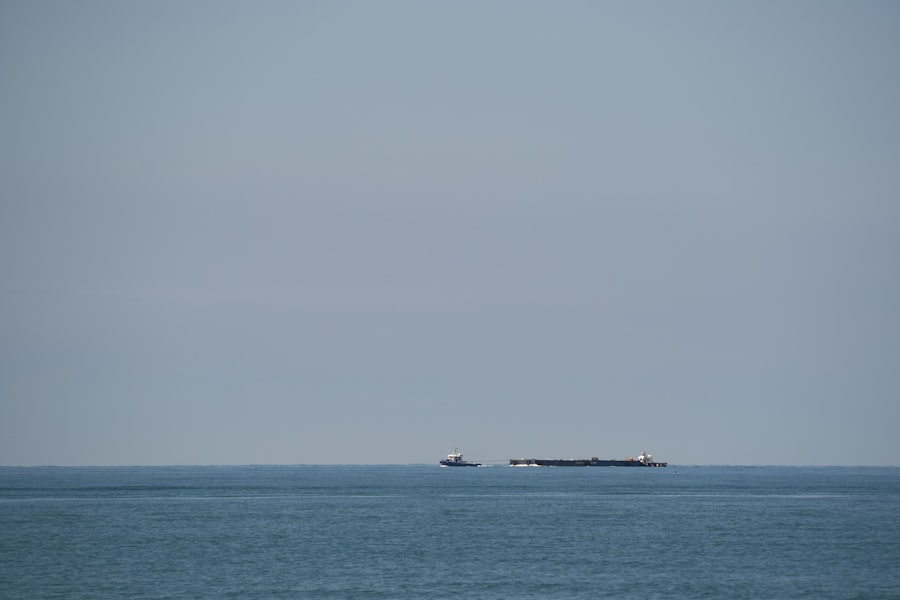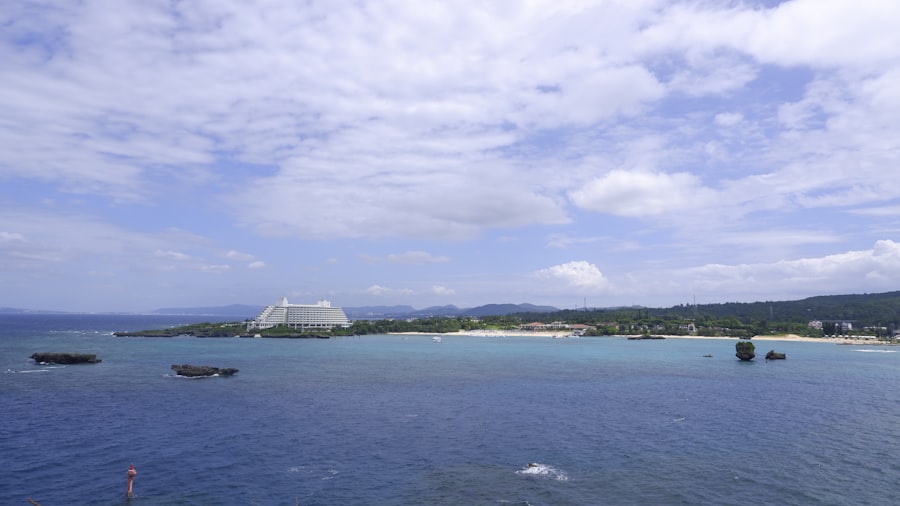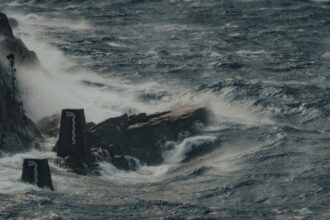The inception of the nuclear navy marked a pivotal moment in maritime history, fundamentally altering the landscape of naval warfare and defense strategies. The concept emerged in the aftermath of World War II, a period characterized by rapid technological advancements and an escalating arms race between superpowers. The United States recognized the potential of nuclear energy not only as a source of power for civilian use but also as a formidable tool for military applications.
This realization led to extensive research and development efforts aimed at harnessing nuclear technology for naval vessels, culminating in the birth of the nuclear navy. In 1946, the U.S. Navy established the Atomic Energy Commission, which played a crucial role in exploring the feasibility of nuclear propulsion for submarines and surface ships.
The vision was clear: to create vessels that could operate underwater for extended periods without the need for refueling, thus enhancing their strategic capabilities. This ambitious project required collaboration among scientists, engineers, and military personnel, all working towards a common goal. The groundwork laid during this period would eventually lead to the development of the first nuclear-powered submarine, setting the stage for a new era in naval warfare.
Admiral Hyman G. Rickover, often referred to as the “Father of the Nuclear Navy,” played an instrumental role in the development and implementation of nuclear propulsion in naval vessels. His vision and relentless pursuit of excellence were pivotal in transforming theoretical concepts into operational realities.
Rickover’s background as an engineer and his unwavering commitment to safety and efficiency shaped the trajectory of the nuclear navy. He understood that the success of this revolutionary technology depended not only on engineering prowess but also on rigorous training and discipline within the ranks. Rickover’s leadership style was characterized by a hands-on approach and an insistence on accountability.
He demanded high standards from his team and was known for his intense scrutiny of every aspect of nuclear submarine design and operation. Under his guidance, the Navy established a comprehensive training program for personnel, ensuring that they were well-versed in the complexities of nuclear technology. His insistence on thorough education and preparedness laid the foundation for a culture of safety that remains integral to the nuclear navy today.
Key Takeaways
- The birth of the Nuclear Navy revolutionized naval warfare and global security by introducing nuclear-powered vessels.
- Admiral Hyman G. Rickover played a crucial role in the development and implementation of nuclear propulsion for naval vessels.
- The first nuclear-powered submarine, USS Nautilus, marked a significant milestone in naval history and paved the way for future nuclear-powered vessels.
- The expansion of the Nuclear Navy led to the development of a diverse fleet of nuclear-powered submarines and aircraft carriers, enhancing the capabilities of the U.S. Navy.
- The Cold War era saw the Nuclear Navy play a pivotal role in deterring potential adversaries and maintaining a strategic advantage.
The First Nuclear-Powered Submarine
The launch of the USS Nautilus in 1954 marked a historic milestone in naval history as it became the world’s first nuclear-powered submarine. This groundbreaking vessel demonstrated the feasibility and advantages of nuclear propulsion, showcasing its ability to operate submerged for extended periods without surfacing for fuel. The Nautilus’s maiden voyage was not just a technical achievement; it symbolized a new era in naval capabilities, allowing submarines to undertake missions that were previously unimaginable.
Its nuclear reactor provided virtually unlimited power, enabling it to travel at high speeds while remaining submerged for months at a time. This capability revolutionized naval strategy, allowing submarines to conduct stealthy operations deep within enemy waters without the constraints of traditional fuel supplies.
The success of the Nautilus paved the way for subsequent generations of nuclear submarines, each more advanced than its predecessor, further solidifying the United States’ dominance in underwater warfare.
The Expansion of the Nuclear Navy

Following the success of the USS Nautilus, the U.S. Navy embarked on an ambitious expansion of its nuclear fleet. The initial enthusiasm for nuclear propulsion led to a series of new designs and innovations, resulting in a diverse array of nuclear-powered vessels.
By the late 1960s, the Navy had commissioned several classes of submarines, including the Skipjack and Los Angeles classes, each equipped with enhanced capabilities and advanced technologies. This expansion was not merely about increasing numbers; it was also about enhancing strategic deterrence. The presence of a robust nuclear navy served as a powerful deterrent against potential adversaries, signaling that the United States possessed unparalleled underwater capabilities.
As other nations began to explore their own nuclear programs, the U.S. Navy’s commitment to maintaining a cutting-edge fleet became even more critical. The expansion of the nuclear navy reflected a broader strategy to ensure national security in an increasingly complex global landscape.
The Cold War and the Nuclear Navy
| Event | Date | Impact |
|---|---|---|
| Cuban Missile Crisis | October 1962 | Heightened tensions between US and USSR |
| Arms Race | 1945-1991 | Competition for nuclear weapons development |
| Nuclear Navy Establishment | 1954 | Development of nuclear-powered submarines and aircraft carriers |
| Naval Blockade of Cuba | 1962 | Confrontation between US and USSR |
The Cold War era was defined by geopolitical tensions between superpowers, with the nuclear navy playing a central role in this high-stakes rivalry. As both the United States and the Soviet Union sought to assert their dominance, naval capabilities became a focal point of military strategy. The presence of nuclear-powered submarines allowed for unprecedented levels of stealth and mobility, enabling both sides to project power across vast distances.
During this period, the concept of mutually assured destruction (MAD) emerged as a guiding principle in military strategy. The ability to launch a retaliatory strike from a submerged submarine provided a crucial deterrent against potential attacks. The U.S.
Navy’s fleet of ballistic missile submarines (SSBNs) became integral to this strategy, ensuring that even in the event of a surprise attack, America could respond with devastating force. This dynamic underscored the importance of maintaining a formidable nuclear navy as a cornerstone of national defense.
The Nuclear Navy in Modern Times
In contemporary times, the nuclear navy continues to evolve, adapting to new challenges and technological advancements. The introduction of advanced submarines like the Virginia class reflects ongoing efforts to enhance capabilities while addressing emerging threats such as cyber warfare and anti-submarine warfare technologies. These modern vessels are equipped with state-of-the-art systems that allow for greater situational awareness and operational flexibility.
Moreover, the role of the nuclear navy has expanded beyond traditional military engagements. Today, these vessels are often deployed for humanitarian missions, disaster relief efforts, and international collaborations aimed at promoting maritime security. The versatility of nuclear-powered submarines enables them to operate effectively in various scenarios, reinforcing their significance in both military and diplomatic contexts.
The Impact of the Nuclear Navy on Global Security

The existence of a robust nuclear navy has had profound implications for global security dynamics. By providing nations with powerful deterrent capabilities, it has influenced international relations and shaped strategic calculations among states. The presence of nuclear-powered submarines has compelled potential adversaries to reconsider their military strategies, fostering an environment where diplomacy often takes precedence over direct confrontation.
However, this balance is delicate; while a strong nuclear navy can deter aggression, it also raises concerns about proliferation and escalation. As more nations pursue their own nuclear capabilities, the risk of miscalculations or misunderstandings increases. The challenge lies in managing these complexities while ensuring that nuclear navies remain effective tools for maintaining peace and stability in an increasingly multipolar world.
The Technological Innovations of the Nuclear Navy
The technological advancements associated with the nuclear navy have been nothing short of revolutionary. From sophisticated reactor designs to advanced sonar systems, these innovations have transformed naval operations and enhanced overall effectiveness. The integration of cutting-edge technologies has allowed submarines to operate with greater stealth and precision, making them formidable assets in any naval engagement.
One notable innovation is the development of advanced weaponry systems that can be launched from submarines. These include cruise missiles capable of striking targets with pinpoint accuracy from great distances, further extending the reach and impact of naval forces. Additionally, improvements in communication systems have enabled real-time data sharing among vessels, enhancing situational awareness and coordination during joint operations.
The Environmental Impact of the Nuclear Navy
While the nuclear navy has brought significant advancements in military capabilities, it has also raised important environmental concerns. The operation of nuclear-powered vessels involves complex considerations related to waste management and potential ecological impacts. The disposal of spent nuclear fuel remains a contentious issue, with ongoing debates about safe storage solutions and long-term environmental consequences.
Moreover, incidents involving nuclear submarines have highlighted risks associated with accidents or leaks.
As awareness grows regarding environmental sustainability, there is an increasing call for transparency and accountability within naval operations to mitigate potential risks associated with nuclear technology.
The Future of the Nuclear Navy
Looking ahead, the future of the nuclear navy is likely to be shaped by ongoing technological advancements and evolving geopolitical landscapes. As nations continue to invest in their naval capabilities, there will be an emphasis on developing next-generation submarines equipped with artificial intelligence and autonomous systems. These innovations promise to enhance operational efficiency while reducing human error in complex maritime environments.
Additionally, addressing environmental concerns will play a crucial role in shaping future policies related to nuclear propulsion. As global awareness regarding climate change intensifies, there may be increased pressure on navies to adopt more sustainable practices while maintaining operational readiness. Balancing military effectiveness with environmental stewardship will be essential as nations navigate an uncertain future.
The Legacy of the Nuclear Navy
The legacy of the nuclear navy is profound and multifaceted, encompassing technological achievements, strategic deterrence capabilities, and ongoing debates about safety and environmental responsibility. Its impact on global security dynamics cannot be overstated; it has reshaped military strategies and influenced international relations for decades. As history unfolds, future generations will continue to grapple with the implications of this powerful maritime force.
The lessons learned from past experiences will inform decisions regarding naval policy and strategy moving forward. Ultimately, the legacy of the nuclear navy serves as a reminder of humanity’s capacity for innovation while underscoring the importance of responsible stewardship in harnessing such powerful technologies for both defense and global security.
The development of America’s nuclear navy is a fascinating chapter in military history, showcasing innovation and strategic prowess. For those interested in exploring this topic further, a related article can be found on the website “In The War Room.” This article delves into the intricacies of naval advancements and the pivotal role nuclear technology played in transforming naval capabilities. To read more about this, visit the article by clicking on this link.
WATCH THIS! America’s Nuclear Navy Was Born From Espionage
FAQs
What is the history of the nuclear navy in America?
The nuclear navy in America was established in the 1950s as a result of the development of nuclear propulsion technology. The USS Nautilus, the world’s first nuclear-powered submarine, was launched in 1954, marking the beginning of the nuclear navy era.
How did America develop nuclear propulsion technology for its navy?
The development of nuclear propulsion technology for the navy was a result of the Atoms for Peace program initiated by President Dwight D. Eisenhower in the 1950s. This program aimed to promote the peaceful use of atomic energy, leading to the development of nuclear reactors for naval propulsion.
What are the advantages of nuclear propulsion for naval vessels?
Nuclear propulsion offers several advantages for naval vessels, including extended range and endurance, increased speed, and reduced dependence on fossil fuels. It also eliminates the need for frequent refueling, allowing for longer deployment periods.
How has the nuclear navy contributed to America’s military capabilities?
The nuclear navy has significantly enhanced America’s military capabilities by providing a strategic advantage in terms of naval power projection and deterrence. Nuclear-powered aircraft carriers and submarines have played a crucial role in maintaining America’s global military presence.
What are some notable achievements of the nuclear navy in America?
Some notable achievements of the nuclear navy in America include the successful deployment of nuclear-powered submarines and aircraft carriers, as well as the development of advanced nuclear propulsion systems for various naval vessels. The nuclear navy has also played a key role in supporting scientific research and exploration, including submarine-launched ballistic missile testing and deep-sea exploration missions.



